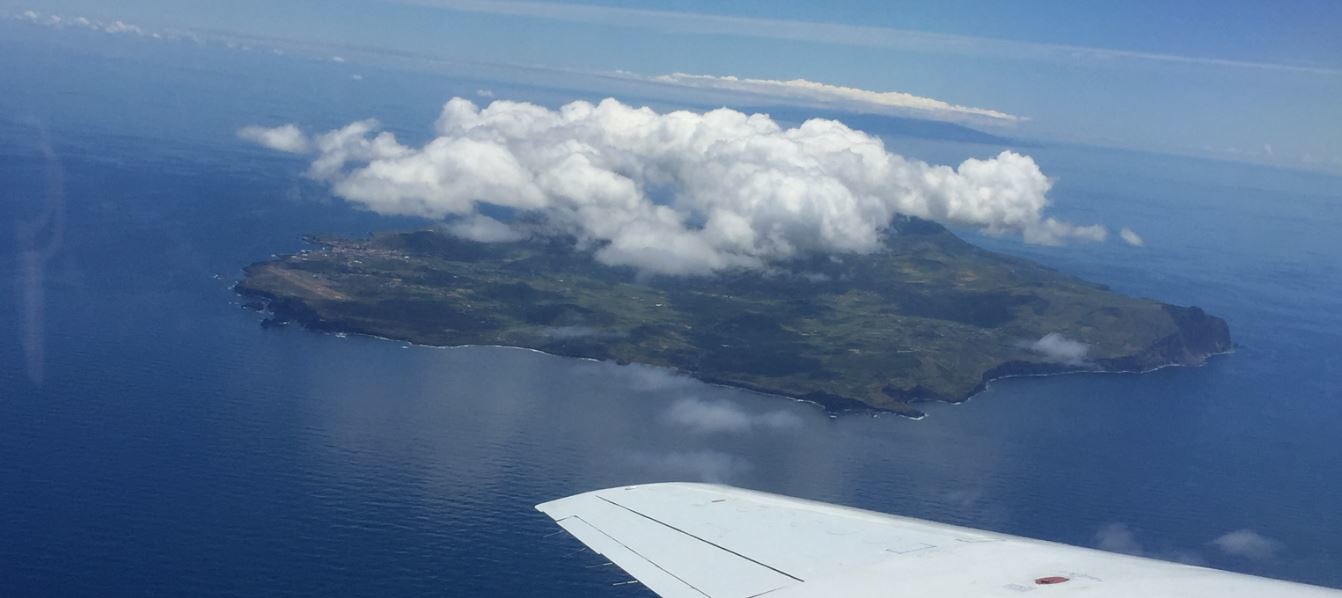New particle formation in the remote marine boundary layer following the passage of cold fronts
Submitter
Wang, Jian — Washington University in St. Louis
Area of Research
Aerosol Processes
Journal Reference
Zheng G, Y Wang, R Wood, M Jensen, C Kuang, I Mccoy, A Matthews, F Mei, J Tomlinson, J Shilling, M Zawadowicz, E Crosbie, R Moore, L Ziemba, M Andreae, and J Wang. 2021. "New particle formation in the remote marine boundary layer." Nature Communications, 12(1), 10.1038/s41467-020-20773-1.
Science

Figure 1. ARM Aerial Facility Gulfstream-1 aircraft sampled aerosol and clouds in the Azores during the ACE-ENA campaign. Brookhaven National Laboratory image.
New particle formation (NPF), namely vapor nucleation and subsequent formation of new particles, is an important source of cloud condensation nuclei globally. It has been long thought that NPF in the remote marine boundary layer is sporadic and occurs only under exceptional conditions. This study shows regular and frequent occurrence of NPF in the upper part of the mid-latitude marine boundary layer, based on airborne measurements and long-term surface-based observations during the Atmospheric Radiation Measurement user facility's 2017-2018 Aerosol and Cloud Experiments in the Eastern North Atlantic (ACE-ENA) field campaign in the Azores.
Impact
This study discovers a previously undocumented new particle formation process in the remote marine boundary layer. The study also shows that the newly formed particles subsequently grow and can contribute substantially to cloud condensation nuclei (CCN) population. Given the important role of marine low clouds in the climate system and the high susceptibility of marine low clouds to cloud condensation nuclei concentration, this new particle formation process may have a substantial impact on marine low clouds and climate.
Summary
Using airborne measurements during ACE-ENA, researchers show that following the passage of cold fronts, NPF takes place in the upper part of the decoupled marine boundary layer (MBL) over mid-latitude oceans. The NPF is a result of the combination of low existing particle surface area, cold temperature, availability of reactive gases, and high actinic fluxes in the clear regions between scattered cumulus clouds. Long-term observations suggest that such NPF occurs regularly and frequently, and that the growth of the new particles helps replenish aerosol and CCN in the remote MBL following the passage of cold fronts. The contribution of MBL NPF to CCN populations is expected to have been more significant during the pre-industrial era when anthropogenic aerosol was minimal and total condensation sink was likely lower. As current uncertainties in model simulations of climate change are in large part a result of our poor understanding of processes under natural conditions, NPF in the MBL and its importance need close attention.
Keep up with the Atmospheric Observer
Updates on ARM news, events, and opportunities delivered to your inbox
ARM User Profile
ARM welcomes users from all institutions and nations. A free ARM user account is needed to access ARM data.


















